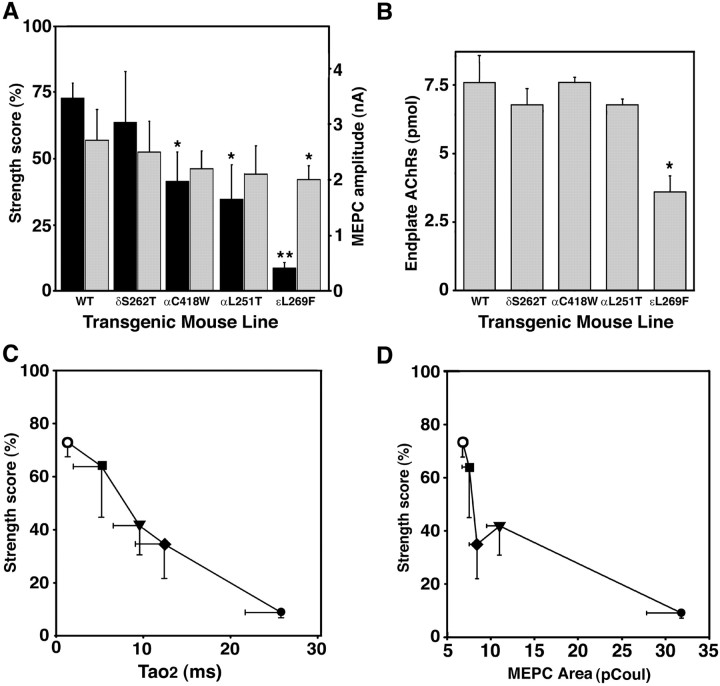Fig. 4.
Transgene-specific neuromuscular weakness correlates with MEPC current kinetics in slow-channel transgenic mice.A, Slow-channel mice exhibit a broad range of muscle weakness (left axis, dark bars). Strength testing was performed using a wire-hang paradigm (see Materials and Methods). Results are expressed as percentage of perfect score. The mean scores of αC418W (p < 0.025;n = 5), αL251T (p < 0.015; n = 4), and εL269F (p<<0.001;n = 8), but not that of δS262F (p = 0.5; n = 4), were significantly worse than age-matched control mice (n = 25). Performance by εL269F mice was also significantly poorer than αC418W mice (p< 0.02). Slow-channel mice have diminished miniature endplate current (MEPC) amplitudes (right axis,light bars). MEPC amplitudes (nanoamps) were recorded during voltage-clamp analysis of excised diaphragms of control (n = 5 mice) or δS262F (n = 4), αC418W (n = 7), αL251T (n = 6), or εL269F (n = 8) transgenic mice. The mean MEPC amplitude was significantly lower than control mice in εL269F transgenic mice (p< 0.025). B, εL269F (n = 7) transgenic mice have reduced endplate AChRs compared with control (p < 0.025; n = 4), as determined by 125I α−BT binding (see Materials and Methods). C, Plot of strength performance versus the slow decay time constant (τ2) of bi-exponential MEPCs for each transgenic mouse line. For this plot the value for τs was used for wild type because no τ2value was resolved for wild-type mice. D, Plot of strength performance versus the log of MEPC area as expressed in picocoulombs. Mouse lines for C and D:open circle, wild type; filled square, δS262; filled triangle, αC418W; filled diamond, αL251T; filled circle, εL269F.

